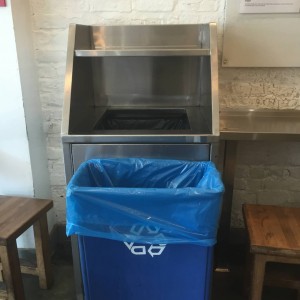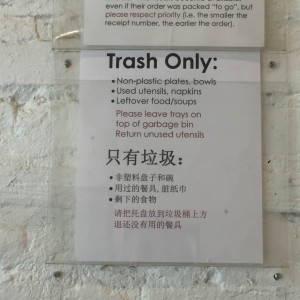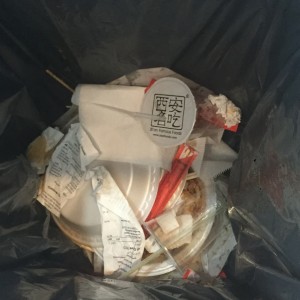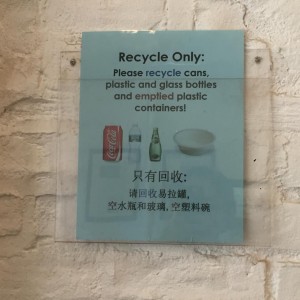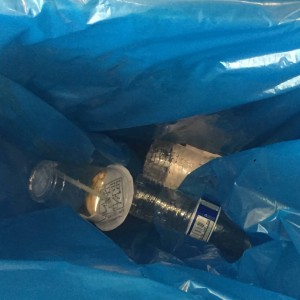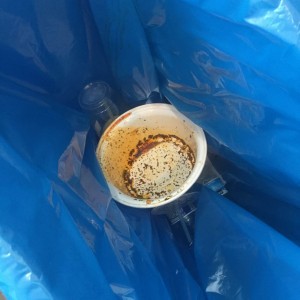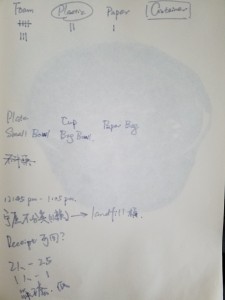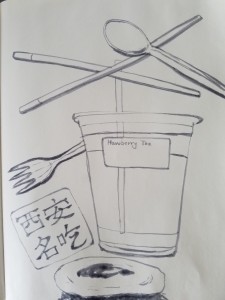Date: Friday July 22, 2016
Time start: 12:45 PM
Time end: 13:06 PM
Object: Customers Dealing with Trash in Xi’an Famous Foods
Location: 81 St Marks Pl
Temperature:
The restaurant is air-conditioned. Feels like 24 ℃.
Observation:
Xi’an Famous Food is my favorite Chinese restaurant, which is really well-received by people from different cultural background. There was only one new trash bin in the restaurant. A few months ago, Xi’an Famous Food added a new one specially for recyclable materials. We wonder whether the action come into effect.
First of all, in the restaurant, there types of containers are offered. Plates and small bowls are made of foam, cups and big bowls are made of plastic, and paper bags are made of paper.
During our observation period, 8 foam, 1 paper, and 2 plastic containers were thrown into trash bins (p.s. only plastic ones are recyclable). It turns out that people would like to label empty plastic containers as recyclable materials while still throw them into the trash bin for unrecyclable materials, mainly for food, if there is leftover inside.
In addition, individual customers mostly order one dish while people with friends may order more (The most common scenario is two shares three dishes).
Ideas & Questions:
Ideas
1 People have consciousness that empty containers are supposed to be recyclable (or they noticed the posts).
2 People throw plates and bowls with food left into the trash bin for food probably due to laziness or unwillingness to empty the container.
3 Receipts are easily to get stained, which may affect their recyclability.
4 Trash bins and trash belong to the system about trash. Trash could be seen as stock. Inflow comes from the use of natural materials while outflow leads to the waste of them although some of the materials are reused, which forms a loop in the system.
Questions
1 How many pairs of chopsticks are usually consumed every day? Could the waste of chopstick cover paper be reduced? Which way might be the most possible way?
2 Should the containers not only be emptied but rinsed? Are unrinsed containers recyclable? If not, who are responsible for rinsing the containers?
3 Are the behavior of customers dealing with takeout similar to that of customers dining in the restaurant? Would the former be willing to empty and rinse containers since they have better conditions and don’t have to confront embarrassment?
4 Is the trash in the bin for food treated as unrecyclable material and just landfilled afterwards?


